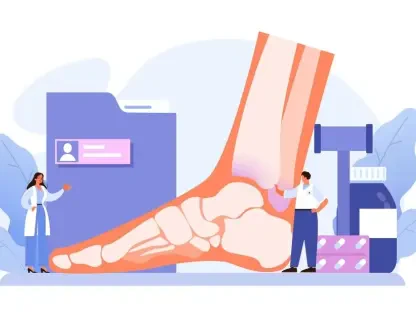Diving into the forefront of medical technology, we’re thrilled to speak with Faisal Zain, a renowned healthcare expert with deep expertise in the development of cutting-edge medical devices for diagnostics and treatment. With a career dedicated to pushing the boundaries of innovation, Faisal has been instrumental in advancing tools that transform patient care. Today, we’ll explore his insights on a groundbreaking AI tool designed for the early detection of Alzheimer’s disease and related dementias in primary care settings. Our conversation will touch on the inspiration behind this technology, the integration of patient data with machine learning, the impact on diagnosis rates, and how this approach is making care more accessible and equitable for all.
Can you share what sparked the idea for creating this AI tool specifically for detecting dementia in primary care?
The inspiration came from a glaring gap in primary care—most practices just aren’t equipped to catch Alzheimer’s and related dementias early on. We saw that over half of older adults never get a timely diagnosis because of time constraints, stigma, and the focus on immediate health issues during short visits. Our goal was to build something that could fit seamlessly into these busy settings without adding burden to clinicians. By leveraging AI and patient-reported data, we aimed to flag potential issues early, giving doctors a head start on intervention.
What specific hurdles in primary care were you hoping to overcome with this technology?
One of the biggest hurdles is time. Primary care doctors often have just a few minutes per patient, and dementia screening isn’t typically a priority during those rushed appointments. There’s also the challenge of scalability—traditional methods like cognitive tests require direct clinician involvement, which isn’t sustainable across large patient populations. We wanted a solution that could work in the background, using existing systems to identify at-risk patients without needing extra effort or resources from the medical team.
How does the Quick Dementia Rating System, or QDRS, play a role in this approach to early detection?
The QDRS is a simple, patient-reported tool with just 10 questions that help capture cognitive changes from the patient’s or family’s perspective. It’s designed to be quick and straightforward, covering areas like memory, daily activities, and mood. Patients can complete it through a portal before their appointment, so it’s ready for review without taking up clinic time. When paired with our AI analysis, it adds a personal layer to the data, making the detection process more robust.
Could you explain what the Passive Digital Marker is and how it contributes to spotting dementia risks?
The Passive Digital Marker, or PDM, is a machine learning algorithm that sifts through electronic health record data to identify patterns linked to dementia. It looks at things like mentions of memory complaints, vascular issues, or other red flags buried in clinical notes and histories. What’s unique is that it runs passively—there’s no need for doctors to input anything extra. It just analyzes what’s already there and flags patients who might need a closer look, all while staying embedded in the health record system.
Your research showed a 31% increase in dementia diagnoses with this tool. Can you break down what that means for patients and their care providers?
That 31% jump means we’re catching dementia cases much earlier than under usual care, which is huge for patients because early intervention can slow progression and improve quality of life. For patients, it translates to getting support—whether that’s medication, lifestyle changes, or family planning—before symptoms worsen. For doctors, it’s about having a heads-up without extra workload. The tool nudges them to follow up on flagged cases, ensuring more people get the attention they need without overwhelming their schedules.
One standout feature is that this tool requires no clinician time and comes at no extra cost. How did you pull that off?
We focused on using what’s already in place—electronic health records and patient portals. By embedding the QDRS and PDM directly into these systems, we eliminated the need for separate screenings or pricey software. The PDM is open-source, so there’s no licensing fee, just the basic cost of deployment, like any app. And since it runs automatically, analyzing data in the background and prompting action only when needed, doctors don’t have to carve out time for manual assessments. It’s all about efficiency.
You’ve mentioned this approach helps level the playing field for patients. Can you elaborate on what that looks like in practice?
Absolutely. What we mean is that this tool reaches patients who might otherwise slip through the cracks—those in underserved communities, with limited access to specialists, or who face cultural or language barriers. By automating detection through widely used health record systems, we ensure that everyone, regardless of background or resources, gets the same shot at early diagnosis. It’s especially beneficial for older adults in rural or low-income areas who might not have regular access to advanced care.
With a 41% increase in follow-up assessments like brain scans and cognitive tests, how does this change the landscape of dementia care?
This increase signals that patients are getting more thorough evaluations sooner, which is critical for confirming diagnoses and tailoring treatment plans. It’s a shift toward proactive care—rather than waiting for symptoms to become undeniable, we’re moving to verify risks with concrete tests like neuroimaging. This not only improves outcomes by catching issues early but also builds trust in the process, as patients see their concerns being taken seriously with actionable next steps.
Looking ahead, what’s your forecast for the role of AI in transforming dementia care over the next decade?
I’m optimistic that AI will become a cornerstone in dementia care, not just for detection but also for personalized treatment and monitoring. Over the next decade, I expect we’ll see even smarter algorithms that can predict progression rates or suggest specific interventions based on individual data. The integration of AI with wearables and home-based tools could also allow continuous tracking of cognitive health outside clinical settings. Ultimately, the focus will be on making these technologies even more accessible, ensuring they reach every corner of healthcare and empower both patients and providers to tackle dementia head-on.









